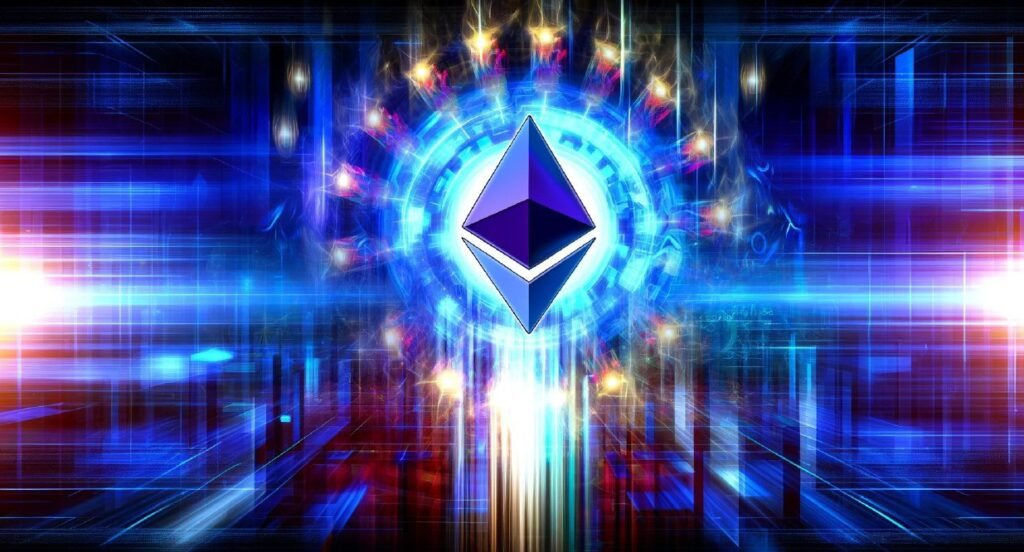Since the Merge of 2022, Ethereum is about to undergo its most radical makeover. The Pectra upgrade—a significant revamp meant to increase efficiency, user experience, and scalability—will turn on the blockchain on May 7, 2025. Combining two vital improvements— Prague (execution layer) and Electra (consensus layer)—Pectra provides 11 significant code changes. The target is Better staking, smarter wallets, and smoother transactions. Here is all you need to know about the approaching event.
Pectra’s Ethereum Upgrade
Pectra presents eleven Ethereum Improvement Proposals (EIPs) to improve the network. These fundamental shifts include programmable wallets, increased staking limits, and faster data processing for Layer 2 solutions. Originally scheduled for late 2024, technical complexity caused delays for the improvement. After extensive testing on three testnets— Mekong, Holesky, and Hoodi—developers verified the upgrade is ready for release. Ethereum engineer Parithosh Jayanthi advised the community to prepare by changing their nodes.
Pectra: Ethereum Scalability Boost
Ethereum’s scalability is supposed to be turbocharged by the Pectra update. EIP-7691 will quadruple Layer 2 throughput, increasing each block’s data “blobs” from 3 to 6. For networks like Arbitrum and Optimism, this shift can increase transaction speeds to roughly 420 per second, drastically lowering transaction fees. EIP-7623 motivates adequate data storage by increasing calldata costs and pushing blobs to op priority. Experts warn, meanwhile, that the rising demand for Layer 2 solutions could shortly restrict these improvements. PeerDAS will help solve this problem by targeting over 100,000 transactions per second in the forthcoming Fusaka upgrade.
Ethereum’s Struggles and Pectra’s Hope

Pectra’s journey wasn’t without difficulties. Holesky and Sepolia, the first testnets, ran across problems, therefore Hoodi, the third testnet, was used to fix the flaws. Developers also discussed the scope of the upgrade; some suggested breaking it up into phases to reduce risk. Twelve ideas—including Verkle trees—were moved to the Fusaka update. Notwithstanding these challenges, Ethereum’s price dropped 42% over the past year, lagging behind the broader cryptocurrency market. Still, supporters think Pectra’s developments might spark investor interest once more.
Ethereum’s Future: Fusaka and Scalability
Designed for late 2025, Fusaka is built on the Pectra upgrade. This future upgrade will include verkle trees for smaller node storage and PeerDAS for exponential scalability. By May 7, node operators must notify their customers to prevent interruptions. Users should still be wary of frauds posing phony demands for “upgrades,” nevertheless. As Ethereum develops, its mix of pragmatism and ambition would help establish its place in the blockchain scene.
Ethereum’s Pectra Leap
The Pectra update of Ethereum is a user-centric leap forward rather than only a technical one. Ethereum is setting itself to keep its supremacy in distributed technology by streamlining staking, improving wallets, and clearing Layer 2 bottlenecks. Still, issues including market volatility and centralization dangers persist. One thing is obvious: the blockchain development is far from finished, regardless of whether Pectra starts a movement or fixes Ethereum.
EIP-7702: Ethereum Wallet Upgrade
EIP-7702, which brings account abstraction to Ethereum wallets, is a notable aspect of the Pectra update. This change lets regular wallets function as smart contracts during transactions. Users can now enable “session keys” for seamless interactions with distributed apps (dApps), pay gas fees in tokens like USDC, and group several activities into one transaction. This invention seems to lower user drop-off rates and thus increase Ethereum’s chances for general acceptance.
EIP-7251 & EIP-7002: Staking Upgrades
EIP-7251 will greatly help validators since it raises the staking cap from 32 ETH to 2,048 ETH. Larger stakeholders consolidating several validators into a single node helps lower operational complexity. Smaller validators will also gain from compounding rewards with lesser staking levels, like 40 ETH. Conversely, EIP-7002 accelerates withdrawals by letting validators activate exits through the execution layer. Some important staking pools, such as Lido DAO, are postponing support until security audits are finished.
Final Thoughts
The Pectra upgrade will greatly improve Ethereum’s scalability and user experience. Whether interested in Ethereum, a developer, or a validator, now is the time to prepare for the upgrade. Stay educated, upgrade your nodes, and watch Ethereum develop. Be wary of frauds and stay current on the most recent advancements. Pectra is only the beginning; Ethereum’s future is bright.
